Today, Asian dishes are most popular in European countries, because sushi and rolls are not only tasty, but also low -calorie. It will not be difficult to prepare such food even inexperienced housewives.
Content
Sushi-roulets or rolls prepared according to all the traditions of Korean or Japanese cuisine are no longer a novelty for anyone, and for many even have become their favorite delicacy. A distinctive feature of the manufacture of such dishes is to twist food with a bamboo mat into a traditional cylindrical shape and cutting it into small slices. Each portion often consists of six, eight or twelve pieces.
Today, not only fish and seafood are used as the main ingredients, but also more European snacks, in particular, meat or sweet additives. The filling is traditionally wrapped in a square shape, sheets of crushed and compressed dry algae (nori), transparent soy paper or thin omelet. Sometimes Nori is inside with the basic content, and rice and other additives on the outside.
The main types of rolls
Asian cuisine offers a huge selection of light food, where in particular all rolls can be divided into several types:
- Baked - dishes processed under the influence of high temperatures for health safety and adaptation of the body of consumers in regions where raw fish is not the main food product.
- California - a dish containing in the quality of mandatory ingredients crab and fresh avocado, and outside, covered with a layer of rice and sprinkled with fine -grained caviar of flying fish (Tobico or Masago). As additional fillings, shrimp meat, tuna, salmon, salmon, light mayonnaise, fresh cucumber can be added.
- Classic ones are prepared according to the traditions of Asian cuisine, which involves the use of one fish and vegetable ingredients covered with rice and tightly wrapped in a sheet of dry algae as a filler.
- Tempura - thermal processing of dishes is carried out not in the oven, but in hot oil and breading, which allows you to create a specific "frer" taste and crunch.
- UNAGI - a dish of Hosomaki category (wrapped in sheets of dry algae with only one ingredient) contains various types of seafood as a filler.
- Philadelphia - a dish from the category of uramaki (outward) contains cream cheese as a compulsory filler and can be supplemented with avocados, caviar, cucumber, green onions, and is wrapped outside in salmon fillet.
- The branded - professional cooks of Asian cuisine offer exclusive dishes, the recipes of which are developed by them on their own.
How to cook rolls yourself?
Asian chefs can cook delicious dishes in just a couple of minutes, wrapping any food in a rice roll from pressed algae. However, certain skills and training are required for such art. In the correct preparation of such dishes as rolls, it is important not only skillfully twisting the roll, but also take into account some features of choosing the necessary products.
Nori or Japanese algae
Freeded dry algae can be sold in sealed packages with both whole sheets and chopped into already finished thin stripes. For the preparation of rolls at home, it is better to choose square sheets of 18-20 cm. When choosing nori, pay special attention to their color-the more saturated and darker, the denser and more pronounced their aroma is.
SU or rice vinegar
If you are going to prepare a dish of Japanese cuisine for all traditions, then you need to use just such rice vinegar. Su is strikingly different from the usual sour and bee European vinegar. Japanese vinegar, on the contrary, is completely non -resistant and even slightly sweet to taste.
It should be remembered that the basis of such a dish as rolls is first of all rice. Even if you have chosen fish for filling the best quality, using ordinary or apple cider vinegar, you risk spoiling food. It is recommended to refuel boiled rice only with high -quality original SU for Japanese cuisine.
Filling and other ingredients
Loof -grained flying fish caviar is an additional component for decorating Asian dishes. However, it is almost indispensable in the preparation of rolls with rice from the outside (cheers of Maki). As such a jewelry, you can also use salmon caviar or black and white sesame seeds, which is recommended to be slightly fried.
It is better to use the Japanese mayonnaise for filling with a sweeter and more soft taste than the usual European source. Classic refreshing additives are avocados or fresh cucumber, and some add sweet pepper. In addition to fish and seafood, you can also add crab, cream cheese, omelet, green onions or decorate with chopped dill.
Soy sauce
To give the softness and elasticity of the nori and juiciness of the rice, Asian dishes are customary to use, dipping into the sauce, of various consistency in salt content. When choosing it, special attention should be paid directly to the composition indicated on the packaging in which there should not be unnatural dyes and flavors, since such a high -quality product should be prepared only by the method of natural fermentation (however, it has less storage than that containing chemistry) . Buy sauce only in glass bottles that can maintain taste, aroma and all beneficial properties, in contrast to plastic packaging.
Gary or ginger
Japanese ginger for traditional dishes is served in already finished pickled white (softer taste) or pink (more spicy) color. This is not an obligatory ingredient when using rolls, but its taste will noticeably embellish a taste bouquet. If you try rolls with different fillings, it will be indispensable, as it has the ability to neutralize the taste of the previous dish and cleanse the oral cavity, so for real gourmets this indispensable product allows you to enjoy each piece.
Basabi or Japanese mustard
There are two main types of Asian mustard - these are Sava and Seyo. Sava is practically not available for acquisition outside Japan and its cost significantly exceeds the second type. The Seyo is produced in European countries and is sold everywhere, and in taste and useful qualities it is practically not inferior to the first.
When choosing such a mustard, give preference to pure powder composition and do not worry due to the complexity of the preparation. Such dry powder must simply be mixed in the proportions indicated on the package with warm water and after 5-10 minutes you can already eat. The finished pasty Basabi always contains additional ingredients that allow you to maintain the expiration date longer, but are not very useful for the body.
Ingredients for home -made rolls
For independent preparation of a classic Asian dish, you will need such a set of components:
- 1-1.5 cups of small short-grained round rice;
- 4-5 tbsp. l. classic rice Japanese vinegar SU;
- 6-8 square sheets of dry algae nori;
- basabi;
- pickled red or white ginger;
- about 0.5 kg of fresh fish fillet (salmon, salmon or tuna);
- soy sauce.
Recipe for classic thin rolls Hoso Maki
Almost all dishes of oriental cuisine are based on two basic ingredients - it is welded rice and fresh fish. There are no additional questions with the last component, because you can purchase a ready -made fillet of any fish and it remains only to cut it. It is necessary to prepare rice for rolls according to all the rules of the Japanese kitchen, otherwise you risk spoiling the dish and other ingredients.
How to prepare rice for rolls?
The Japanese strive to achieve perfection in absolutely everything that they do, including cooking. Perhaps that is why only men prepare in Asian restaurants, as it is generally accepted that the warm hands of a woman can distort the taste of dishes. Cooking and rice preparation is also a special process that requires strict observance of all rules.
Rice should be chosen round and short, since long grains are able to retain moisture more strongly and due to this to lose their adhesive ability required when turning the rolls. It is recommended to thoroughly rinse before cooking in a container with warm water and cleaned of husk, fine debris and dust. Perhaps the water will have to be changed several times, until it becomes transparent, because if the rice is nothed enough, then when cooking it will be covered with sticking starch film.
Almost all the success of the dish depends on properly prepared rice. In the Asian restaurants of the cook, special drawings are used, in which the necessary program is simply exhibited. However, there is nothing complicated in this process, which can be performed at home without special equipment.
Washed rice should be filled in a deep container and pour it with water in proportions 1 to 1.5. When the rice absorbs water, and on the surface, holes for air are formed should be removed from the fire. The boiled rice should be left under the lid to infuse for at least 15 minutes.
Preparation of fillings and gas stations
To vinegar in the necessary proportions (2-3 tbsp. On a glass) add salt and sugar to taste and slightly heat it. Cut fish and other components into narrow and long (up to 20 cm) stripes. Put hot rice in a container with a wide bottom with an even layer for cooling.
A refueling from vinegar should be added with a thin stream, directing it with a wooden or plastic spatula evenly over the entire surface of the rice. The rice should be mixed with careful movements horizontally so that each grain is saturated with vinegar water. Again, distribute the rice evenly along the bottom of the dishes and cover it with a paper towel, preventing drying, until completely cooled.
Formation of rolls
To turn the rolls, a bamboo rug (Makis) is needed. A sheet of dry algae should be carefully folded and cut into two equal parts. One of the parts should be put on the rug with a glossy side down, and rough up.
Prepare a container with warm water in advance, in which 2 tbsp. l. vinegar or lemon juice, to moisturize the hands. It is necessary to take several Art. l. rice and distribute it with an uniform thin layer over the entire surface of the algae, leaving on the free stripes in one centimeter above and below. If the rice begins to stick again to your hands, moisten them again in vinegar or lemon water.

It is recommended to lay rice with a thickness of not more than 0.7 cm with a thickness, and on top horizontally lay all the components with a thin strip over the entire width of the algae. Holding the filling inside, with thumbs should be lifted by a bamboo rug and gradually twist it, directing forward. Twist the roll, connecting both ends of the algae (for better gluing it is recommended to slightly moisten with vinegar or lemon water) and roll it back and back in the rug without pressure.
Cutting rolls into rolls
It is very important to cut portioned pieces correctly, because the appearance of your dish will depend on this. The pieces will look very unappetizing if the rice or filling falls, and there is such a dish is quite inconvenient. To cut them perfectly evenly, moisten the knife in vinegar or lemon water so that the blade glides along the sticky rice.
Professional cooks advise cutting each roll in half, and then another three, four or six equal parts, not forgetting to dip a knife in water with the addition of vinegar or lemon juice. Ready pieces should be served fresh with sauce, ginger and sharp bassabi. Before using a classic Japanese dish, do not forget to tell the sustainers of the “pleasant appetite” on the Japanese - Itadakimasu!

Step -by -step recipes of popular rolls
California roll recipe
One of the most popular dishes of Asian cuisine made with rice outward, which contains crab meat, fresh avocado and sprinkled with caviar of flying fish. Additional ingredients of the recipe for such rolls can be seen in the corresponding photo that you can add at will or replaced with any others. Such rolls are prepared as follows:
- On ½ square of dry algae, lay the boiled rice with a thin uniform layer, and on top, slightly pressing, caviar.
- Put the algae sheet with rice down on the rug.
- Put the components cleaned and chopped into thin stripes on nori.
- Twist the filler into the roll and give it a square shape using a rug.
- Cut the rolls of 6 portioned pieces each.
Recipe for Rolls "Philadelphia"
Probably the most popular and satisfying dish of Asian cuisine, because it contains a fairly large amount of fresh fish and delicate cream cheese, performed by rice outside is prepared as follows:
- On a ½ square of dry algae, lay the boiled rice with a thin uniform layer.
- Put the algae sheet with rice down on the rug.
- Put the ingredients peeled and cut into thin stripes (see photo) on nori.
- Wrap the filling into the roll and give it a square shape with a rug.
- Salmon fillet must be put on top with a thin layer, and then cut the roll into portions.
Hot roll recipe
Tempura with rice outside is performed similarly to a classic uramaki with additional frying of rolls in a bat. Therefore, in addition to standard ingredients (fish and cheese), a chicken egg, breading crackers and temporal flour will be needed for cooking. Frete rolls, in this way, are very tender, and rice is not too fat from oil:
- On a ½ square of dry algae, lay the boiled rice with a thin uniform layer.
- Put the algae sheet with rice down on the rug.
- Put the components cleaned and chopped into thin stripes on nori.
- Twist the filler into the roll and give it a square shape using a rug.
- Prepare the batter:
- break the egg into the container and add a couple of tbsp. l. cold water;
- add flour and mix thoroughly until a homogeneous, not too thick consistency.
- Cut the rolls in half and dip in the batter, then in crackers and fry in preheated oil until golden crust is obtained.
- Put the finished rolls on paper towels to absorb excess fat.
Recipe for making sweet rolls in European
Japanese technology for twisting food into rolls has become so popular that many cooks use it for preparing desserts from non -traditional products in Asian cuisine:
- Skip cottage cheese through a sieve, season with sour cream and mix thoroughly.
- Wash and peel fruits, and then cut into cubes.
- Distribute the curd mass on the pancake by an even layer by about 2/3.
- Put the fruits horizontally over the entire width of the pancake.
- Twist the roll and leave in the refrigerator for 1-1.5 hours.
Video: How to cook rolls?
A detailed video lesson will help you cook original mosaic rolls yourself:


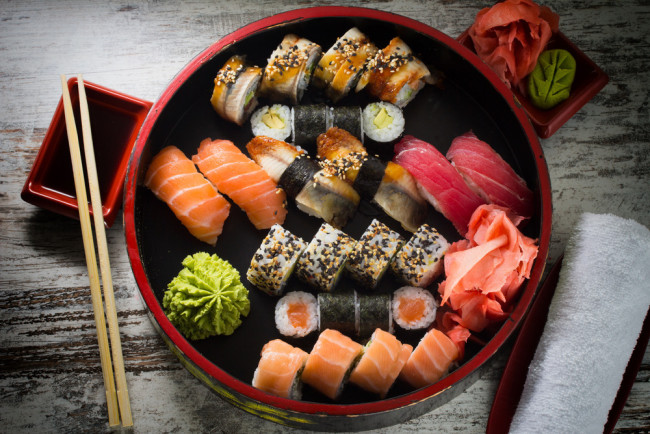








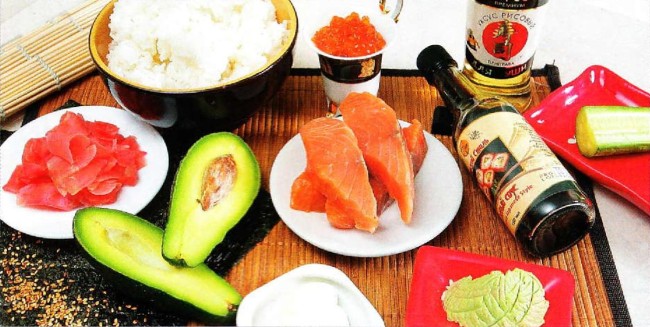





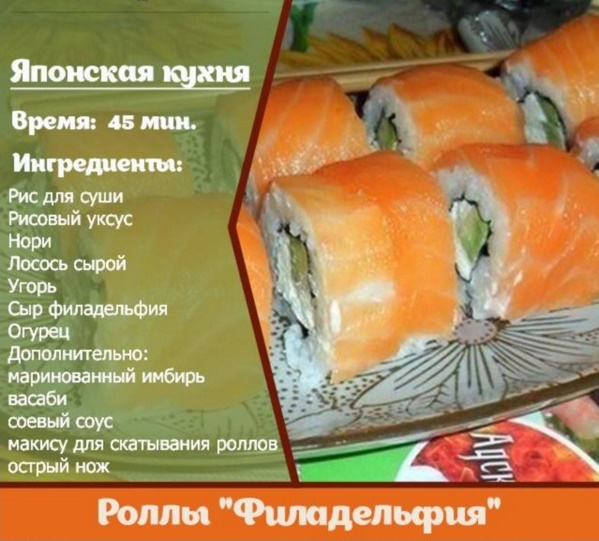
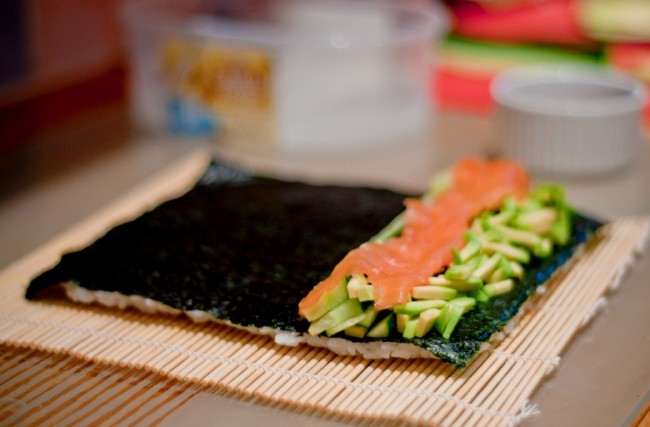
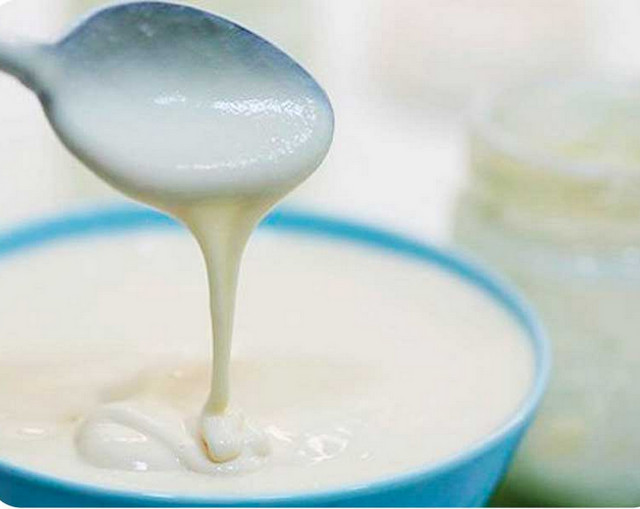
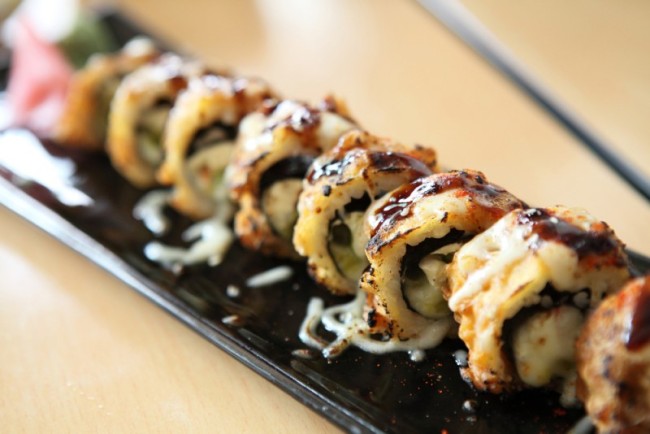
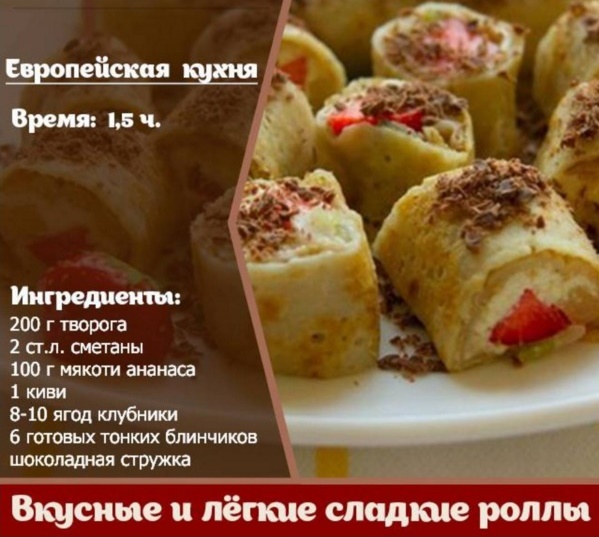







Comments
a couple of years ago, there was no side of metrogils from the same problem, there were no side effects ...
I’m not a fan of peeling at all, it saves from acne of metrogil, it also smoothes it ...
Great article! ...
I take the second course of the Capsules Climafite 911. The tides went very quickly. It became calmer, irritability went away and I sleep well ...
i also noticed - it is worth nervous, everything immediately affects the face. Therefore, I try to avoid conflicts and unpleasant people. Of the creams, I like Miaflow from wrinkles - smoothes not only small wrinkles ...